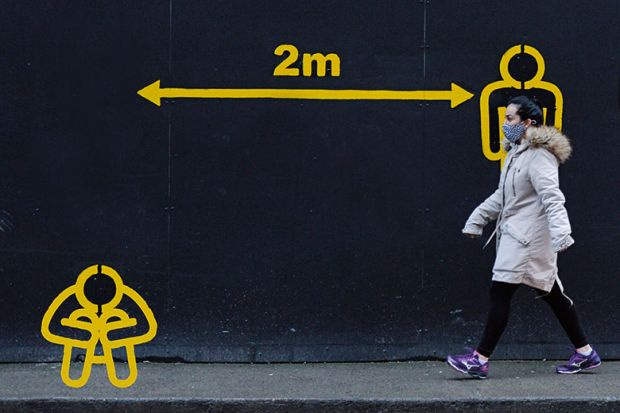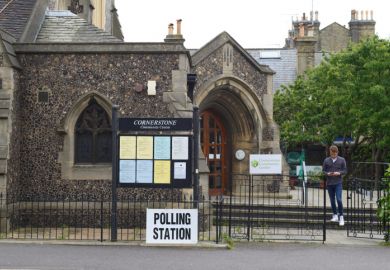The Covid-19 pandemic will forever be defined by certain unforgettable images: the makeshift morgues, the hospital patients on ventilators clinging to life, the care home residents reduced to waving at loved ones through windows because of strict social distancing rules.
But while the victims of the virus have mainly been older, the pandemic’s impact on young people has nonetheless been seismic, with global shutdowns forcing school closures and lessons at home. Indeed, not everyone even got the lessons at home research has shown that in the UK alone, a quarter of pupils – about 2 million children – received no schooling at all during the first lockdown that began in March 2020.
As for post-school education, while most universities quickly switched to delivering learning online, not everyone was able to benefit. The World Bank estimates that some 220 million university and post-18 students in 175 countries have had their studies significantly disrupted by the pandemic – and they are by no means confined to the developing world. Even students at the world’s leading universities have encountered issues.
“I’ve had countless incidents of classes ending early, being kicked out by a poor wi-fi connection or simply lessons where it is, frankly, impossible to learn at all because of technical difficulties,” says Olivia Winnifrith, a second-year student at the University of Oxford, of the troubles she faced during three terms of online learning. Some of her friends have endured far tougher conditions, she adds, with some studying in cramped bedrooms shared with younger siblings or being unable to access reliable high-speed internet.
According to a study by the UK’s National Union of Students, published in September, 27 per cent of UK students did not have access to the internet during lockdowns. And it is the inequitable access to the internet by class and income that has particularly concerned many experts; research in the US found that among households with school-age students, only 55 per cent of those with incomes of less than $25,000 (£18,000) “always” have access to the internet and 61 per cent “always” have access to computers for educational purposes; the figures are 90 and 92 per cent respectively for households with incomes in excess of $200,000.
Post-lockdown, “universities will have to redouble their efforts to support disadvantaged students, who are significantly more likely to have suffered learning loss during the pandemic”, says Lee Elliot Major, professor of social mobility at the University of Exeter, who worries that the pandemic could reverse years of good work in recruiting students from disadvantaged backgrounds.
Digital inequality, disruptions to exam preparation and the disproportionate effect of Covid-19 on the health and economic welfare of poorer communities have also taken their toll internationally, says Graeme Atherton, head of the Centre for Levelling Up at the University of West London, whose recent Sutton Trust study of 45 countries found that 80 per cent have seen their university admissions significantly disrupted. “The pandemic may only serve to exacerbate existing inequalities in higher education participation and attainment,” he says.
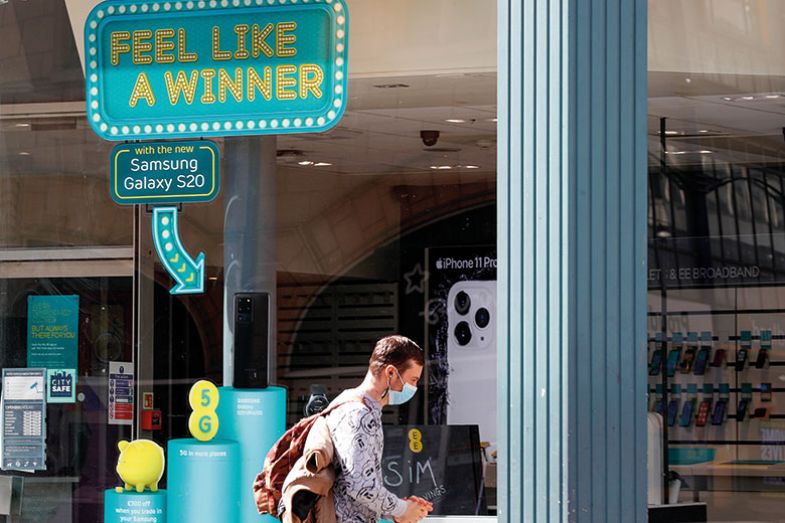
So what can be done to mitigate the impact of lockdowns on those finding it hard to gain a foothold in higher education? In 2020, many of Australia’s states and universities used family income and social class in the process of higher education admissions. In Victoria, hardest hit by lockdowns, final grades included an assessment of how much disruption final-year school students had experienced, while in New South Wales, universities offered concessional admission requirements to students whose parents were unemployed or furloughed.
However, Andrew Norton, professor in the practice of higher education policy at Australian National University, believes that such measures are likely to have had a “marginal” impact and may also have boosted the admissions prospects of some students who don’t face long-term structural disadvantages. “Special measures [that] over-compensate for Covid problems may be a net negative for the broader access targets,” he warns. For him, a bigger issue is arguably providing more places for an expected influx of undergraduates who, in normal times, would directly have joined the labour market. With disadvantaged groups holding weaker academic results on average, they risk being squeezed out given the expected high demand, he explains. “Universities are trying to meet demand, [and] this will at least partially neutralise the negative effects for access coming from increased total demand,” Norton says.
Elliot Major says the number of university places is also a “looming question for university access policy” in the UK; it is currently unclear “whether institutions will be free to expand degree numbers or not” to accommodate the increased demand. “All the evidence suggests widening access occurs in an expanding higher education system when there are more opportunities available,” he says.
Contextual admissions must also play their part, believes Elliot Major, who says the problems with schooling during the pandemic have intensified the case for this still-controversial practice.
“I hope those making university admissions decisions this year will be able to offer lower grades for disadvantaged students who have suffered extra learning loss during the crisis. Many have faced extremely challenging home learning environments: lacking study space, internet connectivity and the resources to pay for private tutoring,” he says.
In the US, meanwhile, three-quarters of four-year institutions made the SAT and ACT standardised entry tests optional.
Gerardo Blanco, academic director of Boston College’s Center for International Higher Education, says that “in some ways, it’s very democratising, as we know that [successful outcomes in] many of these tests are associated with class and opportunity, and with income and wealth.” However, the competition for places is also likely to increase if potential applicants feel that an obstacle has been removed, he warns. And those advantaged students who are able to access family or private support when applying to university may also benefit, given the suspension of such services in schools during the pandemic.
Another equity issue is all the disadvantaged students likely to have veered off the path into higher education because the pandemic hit at a formative point in their high school careers, Blanco says. Research from Anthony Carnevale, director of the Georgetown University Center on Education and the Workforce, found that first-year enrolment in community colleges – which typically have larger shares of disadvantaged students – fell by 21 per cent in autumn 2020, a far sharper fall than the national average (which nonetheless saw a net loss of 560,000 students nationwide). The centre’s research also found that among households in which at least one person planned to take a post-secondary course, 42 per cent of those with incomes under $25,000 had seen a family member completely cancel their plans, compared with only 19 per cent of households with incomes of more than $200,000.
“Overall, the pandemic has had a substantially negative impact on disadvantaged students’ participation in higher education, at least in the United States, and we suspect similar trends hold in many other parts of the world,” says Carnevale.
In Australia, there is mounting anecdotal evidence that the most vulnerable school students “have already departed more formal educational settings as a result of the prolonged lockdown periods in 2020”, according to Sarah O’Shea, director of the National Centre for Student Equity in Higher Education. And the tough restrictions on travel within and between states will also prevent many poorer would-be students from taking up a university place, O’Shea says. With those from rural and remote areas often travelling vast distances to attend university, scaled-down travel options and health fears about boarding trains or long-haul buses will put many off, she believes.
And even if Australian institutions lower their entry requirements to account for Covid’s disruption, “there is a need to provide carefully nuanced scaffolding and support to students” who have had prolonged absences from a formal educational setting, she adds.
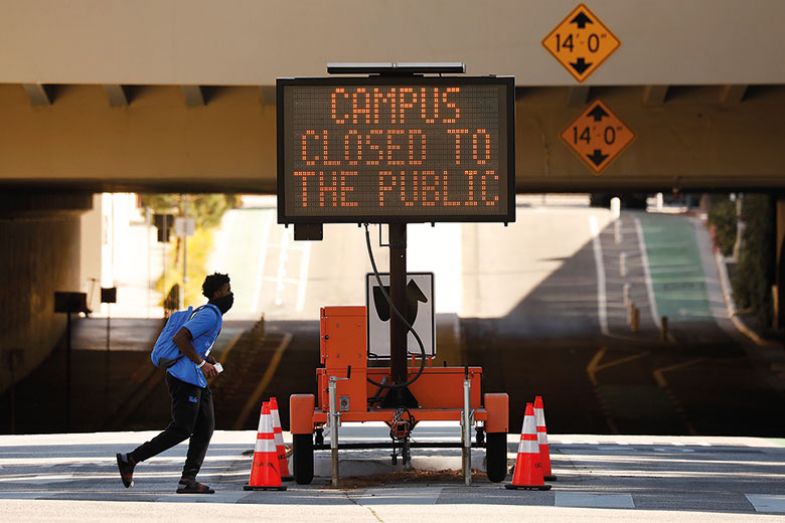
However, universities’ ability to provide that sort of support is in danger, O’Shea warns. Education is Australia’s fourth biggest export industry, worth A$40 billion (£20.8 billion) at its peak, and the loss of international students is having a significant economic impact. Universities Australia estimates that the fall in revenue will hit A$16 billion by 2023, and it said in February that the disruption has already cost 17,000 jobs. Among that number, support and outreach workers are likely to have been particularly hard hit because many of them are on renewable contracts, according to O’Shea.
This will have significant and long-term implications, not only on how students are supported in their learning but also on the level of additional support provided at all stages of their studies. “Again, this will particularly affect those from more disadvantaged backgrounds,” O’Shea says.
For the University of West London’s Atherton, this is a crucial point. “It’s not just a matter of how we get disadvantaged students into higher education; it’s how we ensure they succeed,” he says.
A poll by England’s Office for Students found that 72 per cent of 1,416 university students surveyed had been affected by a lack of access to a quiet space to study during the lockdowns. It also found that 52 per cent of students said their learning was impacted by a slow or unreliable internet connection and 18 per cent were affected by lack of access to a computer, laptop or tablet device.
In February, the government announced an additional £50 million for a fund to support students in England who are struggling financially as a result of the pandemic. However, the National Union of Students warned that it would not be enough to tackle the scale of the problem. The government was previously criticised for saying that it had provided an additional £20 million in December; as the pot had been cut by £16 million in May 2020, this represented a mere £4 million overall rise, critics observed.
In 60 per cent of the countries Atherton surveyed between August and October 2020, some form of additional financial support – usually grants or reduced tuition fees – was in place for low-income students, particularly in leading university systems and richer countries. In France, for instance, an additional €200 (£173) one-off support was provided for students in precarious situations. In the Republic of Ireland, €15 million was allocated to university widening access offices nationally so that they could buy laptops and other technology equipment for low-income students.
For respondents from lower income countries, however, such offers often came with strings attached. In the Philippines, for example, students were offered tuition subsidies with the condition that they finish their studies and, later, serve in local government schools.
“Such financial support is obviously widely welcomed. However, respondents also highlighted that more may be needed to meet the full needs of students from low income or marginalised backgrounds,” Atherton writes.
That is perhaps unsurprising given that many of the problems faced by low-income learners and marginalised groups pre-date the pandemic.
“[Covid-19] has exacerbated existing trends,” David Woolley, director of student and community engagement at Nottingham Trent University, says. Long term, however, it may help university leaders to grasp the challenges their students face given the scale of demand for laptops, hardship funds or permission to remain on campus because their homes lack broadband or study space.
“Often institutions proudly talk about how many disadvantaged students they are taking in, but many of them don’t think through what that actually means,” Woolley says. “What does it mean if you can’t afford a laptop of your own, or if your siblings need to move straight into your room after you leave [home]? A much wider demographic attend university now than they did 20 to 30 years ago, but I’m not sure universities have changed the infrastructure to match that. I think when the dust settles, this will have helped people realise who our students actually are.”
Over the pandemic, Woolley says, the sector has come to realise that it is as important to focus on non-traditional students' participation as on their initial access. “It is a long, hard journey, getting people to look at systems which have really served them well for decades and realising that there’s something wrong with them,” he says.
Chris Millward, director of fair access at England’s OfS, agrees. “One member of a university’s governing body said to me recently, ‘We identified levels of disadvantage within the university we didn't know were there…it surfaced issues that we needed to deal with.’ But the big test is what happens to the longer term.”
The English sector had been heading in the right direction when the pandemic hit, Millward says. The number of students from the least represented UK neighbourhoods entering high-tariff institutions increased by 22 per cent in 2020, and the OfS has set targets to eliminate the entry gap between the least and most advantaged at England’s most selective universities by 2040. But Millward is concerned that current students have been hit hard during the pandemic by factors such as losing their part-time jobs, increased family hardship and rising levels of anxiety. The regulator will be monitoring how universities respond to these issues “very carefully”, he adds.
How the pandemic affects the considerable attainment gap between white and black students is another challenge. Even back in 2018-19, white students were twice as likely as black students to graduate with first-class honours. With Covid intensifying racial inequalities – according to data from the UK’s Office for National Statistics, mortality rates for people of black African or black Caribbean ethnicity in 2020 were up to two-and-a-half times higher than for people of white ethnicity – it will surely have a knock-on effect into higher education, many believe.
Anthony Jack, assistant professor of education at the Harvard Graduate School of Education, says this is already becoming clear in the US. The pandemic is “mapping on to long-standing racial inequalities…intensifying the social ills that colleges and universities were only beginning to grapple with before 2020”, he says. The pandemic has illuminated how illusory the supposed separation is between lower-income and ethnic minority students’ “town” and “gown” lives. “Who is more likely to get a call now saying that a family member has contracted Covid-19 or has died from Covid-19?” he asks.
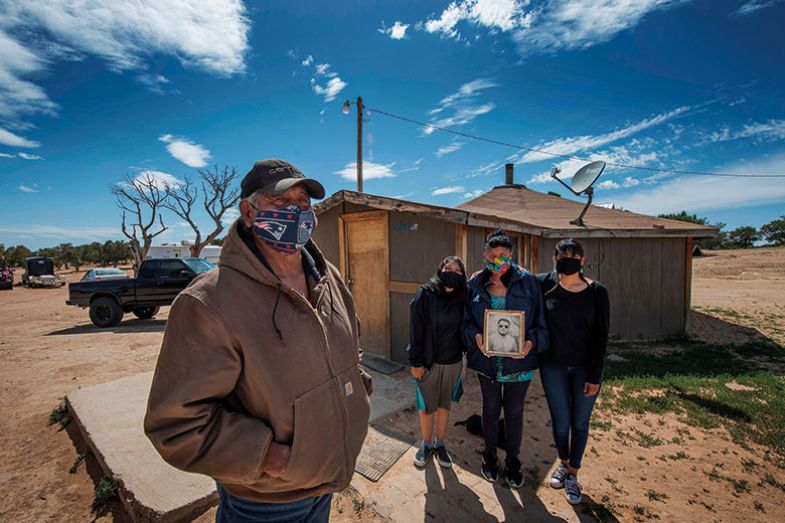
The bigger picture is that the financial precarity of universities will impair their ability to support disadvantaged students during and beyond the pandemic, Georgetown’s Carnevale says. “To make a real difference will require a major intervention from the federal government. A tuition-free college plan, such as the one President Biden supported during his campaign in 2020, would be one vehicle for such intervention, as it would encourage more students from disadvantaged backgrounds to attend college without worrying about affordability,” he says. However, it is not clear whether they will be able to move such legislation in time, he adds.
Paul LeBlanc, president of Southern New Hampshire University, agrees that the problems are systemic. The pandemic has hit low-income communities especially hard, not just in terms of employment but also in rates of disease and death. These stresses put pressure on students to work and contribute to the family and also put pressure on their mental health, he says. “It’s a kind of witch’s brew of things working against the futures of a lot of poor kids and many students of colour,” LeBlanc says. According to data on 2021 enrolments published by the National Student Clearinghouse Research Center, the largest decline in enrolments – 12.5 per cent – was among Native American students, while Latino enrolments fell by 5.3 per cent.
LeBlanc says his institution quickly noticed that many of its students of colour were logging on and doing their work in the middle of the night. Sometimes this was because they were doing paid work late into the evening; many also lived in “a crowded home, often where there wasn’t quiet time. There might be one family computer, but younger siblings would use it in the evening to do their homework. We sent out computers, opened up the campus to students who were housing-insecure or not safe at home, but the number one request we had, [accounting for] 67 per cent of our emergency grants, was for food insecurity. That’s shocking.”
LeBlanc, whose institution is mostly online, says expanding distance learning may be one way to tackle some of higher education’s equity issues. This year’s enrolments for online learning are already up 35 per cent for undergraduate programmes, he says – possibly because online learning is particularly attractive to non-traditional students and is more affordable.
“An asynchronous online offering can fit around a busy life. The pandemic has made everyone’s lives busier, especially if you’re low income,” LeBlanc says.
Victoria Fielding, a lecturer at the University of South Australia, agrees. The pandemic provided “a national experiment with online learning, and some students found that it really worked for them”, she says. Abolishing the binary between online and face-to-face learning and allowing students to pursue a balance that works for them would be a start, she says.
“It opens up [higher education to] a whole other segment of people who just can’t do those fixed hours, who might do shift work, for example,” she says. In rural Australia, “it might take them hours just to drive to the nearest campus. A parent might get home from work at the end of the day, need to see their kid and put them to bed with their homework, and then at 9pm they can log on and be the student,” she says.
LeBlanc adds that because of the urgency for low-income communities to get back to work, providing easier ways to access higher education later in life or to drop in and out, such as through microcredentials, would help diversify access.
Another innovation to which online learning, in particular, lends itself is learning analytics – although these are increasingly being used by bricks-and-mortar institutions too. Nottingham Trent’s Woolley sees this as a key tool to monitor which students are at risk of falling behind during and beyond the pandemic given the strong correlation between engagement and success. “We can take a two-week snapshot and see who is engaging or not – and historically, disadvantaged students are much more likely to be less engaged,” he says. “Personal tutors can then call those students and, if they need help, direct them to the right services. Being proactive is important.”
Millward says institutions will need to increase support for incoming students, including academic assistance, since many schools – particularly in the public sector – were unable to provide their pupils with full days of teaching during the lockdowns. However, he would hesitate to advise offering catch-up lessons as it is too hard to identify the common areas that have not been covered. Universities should instead be looking early on to understand the capabilities of the students they have admitted and offering “really good, tailored support when they arrive”, Millward says.
Harvard’s Jack says it will be crucial to expand and diversify mental health services. “More students will be dealing with problems than before, and we don’t know what triggers are going to affect students in very bad mental situations when they come back to campus,” he says. “In America, we are also dealing with the other pandemic of racism…We need to make sure that we understand what black, Latinx and Native communities are going through and the specific cultural strategies that we need to make inroads into those communities. Students have to feel comfortable talking to us, so universities have to rethink even the smallest things that we take for granted and re-examine the protections afforded to those who are privileged.”
For him, the stakes couldn’t be higher. “Covid-19 is an unerring mirror, reflecting back just how equal our societies are,” he says. “We have a moment here not only to address the present-day disparities, but to build systems that account for and work towards addressing past inequalities.”
Register to continue
Why register?
- Registration is free and only takes a moment
- Once registered, you can read 3 articles a month
- Sign up for our newsletter
Subscribe
Or subscribe for unlimited access to:
- Unlimited access to news, views, insights & reviews
- Digital editions
- Digital access to THE’s university and college rankings analysis
Already registered or a current subscriber? Login
